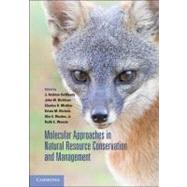
Note: Supplemental materials are not guaranteed with Rental or Used book purchases.
Purchase Benefits
What is included with this book?
| Contributors | p. ix |
| Preface | p. xv |
| Biodiversity discovery and its importance to conservation | p. 1 |
| Genetic identification of cryptic species: An example in Rhogeessa | p. 22 |
| Gene flow, biodiversity, and genetically modified crops: Weedy rice in Thailand | p. 35 |
| Environmental risk assessment of genetically engineered salmon | p. 37 |
| A community and ecosystem genetics approach to conservation biology and management | p. 50 |
| Landscape genetics of an American chestnut borer | p. 63 |
| Vertebrate sex-determining genes and their potential utility in conservation, with particular emphasis on fishes | p. 74 |
| Sex identification and population size of grizzly bears by using noninvasive genetic sampling | p. 76 |
| Historical and contemporary dynamics of adaptive differentiation in European oaks | p. 101 |
| Adaptive shifts in natural populations of high dispersing species | p. 117 |
| Association genetics, population genomics, and conservation: Revealing the genes underlying adaptation in natural populations of plants and animals | p. 123 |
| Unraveling counterintuitive evolutionary trends: Coat color in Soay sheep | p. 139 |
| Hybridization in threatened and endangered animal taxa: Implications for conservation and management of biodiversity | p. 169 |
| Mating opportunities in animal hybrid Zones | p. 171 |
| Pollen and seed movement in disturbed tropical landscapes | p. 190 |
| Effective population size | p. 192 |
| Allelic recharge in populations recovering from bottleneck events | p. 194 |
| Implications of landscape alteration for the conservation of genetic diversity of endangered species | p. 212 |
| Dune restoration introduces genetically distinct American beachgrass, Ammophila breviligulata, into a threatened local population | p. 214 |
| Integrating evolutionary considerations into recovery planning for Pacific salmon | p. 239 |
| The Kermode bear: A swirl of scientific management, and ethical values in British Columbia | p. 259 |
| Using molecular methods to improve the genetic management of captive breeding programs for threatened species | p. 267 |
| Pedigree reconstruction: An alternative to systematic breeding | p. 285 |
| Wildlife reintroductions: The conceptual development and application of theory | p. 296 |
| Genetic ramifications of restoration of blight-resistant American chestnut | p. 307 |
| Evolutionary toxicology | p. 320 |
| Microarrays and molecular phenotypes | p. 335 |
| Index | p. 363 |
| Table of Contents provided by Ingram. All Rights Reserved. |
The New copy of this book will include any supplemental materials advertised. Please check the title of the book to determine if it should include any access cards, study guides, lab manuals, CDs, etc.
The Used, Rental and eBook copies of this book are not guaranteed to include any supplemental materials. Typically, only the book itself is included. This is true even if the title states it includes any access cards, study guides, lab manuals, CDs, etc.